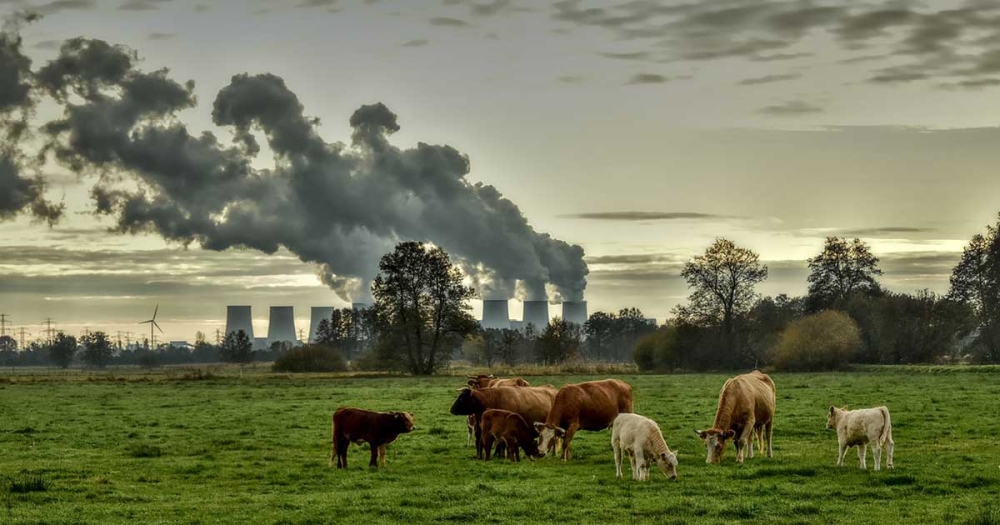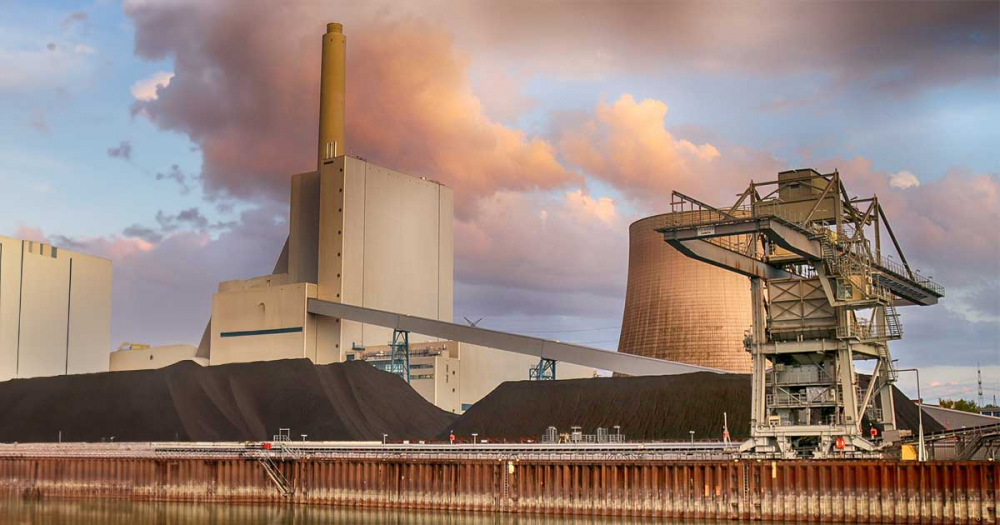Whatever the opposition and green NGOs say, the National Energy and Climate Plan (NECP), revised in 2023, is the right road map on the way to climate neutrality.
Of course, neither the opposition nor the civil organizations went without a word in favor of the revised NECP, and although they acknowledged some positive progress in the utilization of solar energy, they still underestimated the 29% target for increasing the share of renewable energy, saying that the average EU member states’ commitment was 32% by 2030, which is expected to be 42.5% after the review round.
Of course, like the German radical greens, the Hungarian opposition and the civilians associated with them still do not take into account the fact that renewable energy sources are not needed for their own sake, but to reduce the emission of greenhouse gases and other air pollutants. From this point of view, decarbonized and emission-free nuclear power generation is also considered clean, which is recognized by the EU taxonomy regulation. The Hungarian electricity sector is already 65-70% climate-neutral today, and based on the figures of the revised NECP, it will be 90% in 2030.
The opposition and civilian experts mention as a positive that the plan to expand wind energy capacities appears in the revised NECP, with the remark that wind energy will still have a very minor role in the future. According to them, wind energy could help the stability of the electricity system, the reduction of import demand and the reduction of the amount of balancing energy, since it is an energy source that complements solar energy well, which is typically capable of higher production than the sun in other time zones. Our first comment in this regard is that until now no one has prevented the increase in wind power generation in Hungary, capacity-increasing modernization has already been possible through the Metár tenders. The only problem was that solar power generation is much cheaper than wind power generation, so the latter could not compete in the price competition. Our second comment is that weather-dependent wind power turbines are also not suitable for predictable, plannable system-balancing, since from the point of view of the system controller, their production changes rapidly and cannot be predicted. Fossil balancing and reserve capacities must be kept ready in the same way as if there were no wind.
The opposition and civilian experts are also dismissive of the doubling of geothermal energy's appearance on the heat market, since, as they write, the potential would be there for the further increase in ambition. We can actually agree on this, since the current utilization is 6 PJ/year, the expected geothermal wealth is 105-130 PJ/year, and the realistically extractable wealth is roughly 60 PJ/year, i.e. the 12 PJ/year extraction in 2030 is still only 20% of the possible utilization. Here, of course, there are immediately two questions, which arise from the fact that geothermal energy cannot be used unconditionally, like wind and solar energy, but with conditions. If geothermal energy production is not sustainable, then the reservoirs will be exhausted, not one hundred percent that they will remain renewable. Therefore, the question is how many years we want to use the geothermal energy available to us, in the short term or in the long term, and whether we can complete the re-injection of the extracted thermal water back into the geological layers used for extraction. Since only geothermal energy is available without limitation, but the right type of storage geological formation and the thermal water itself are not, the basis of sustainability here is re-injection of the used thermal water into the right geological formation.
In relation to heat pump heating systems, opposition and non-governmental organizations share the same criticism: their 3% share of the heat market in 2030 will remain far below their inherent potential. However, this is not a one-variable equation either. The power requirement of heat pumps is 8-, 10-, 12-, 14-, 16 kW, calculating with medium power, 1 million new heat pump heating systems mean a daily power consumption of 12,000 MW. For comparison, Hungary's current daily peak consumption is 7,490 MW, and we still import more than 30% of our electricity need.
But now let's look at the details, because the devil always hides here.
Everyone agrees that, compared to current trends, in order to achieve climate neutrality by 2050, both the EU and Hungary must reduce GHG emissions more strongly, and further increase energy efficiency, as well as the proportion of renewable energy. According to the Commission’s Fit for 55%! (Towards 55%!) package of measures, the EU-level goal is to reduce emissions by 55% compared to 1990, to increase the share of renewable energy in final energy consumption to 32%, together with a 32.5% reduction in primary energy consumption. The member states therefore had to take into account the new, more ambitious climate protection efforts when updating their National Energy and Climate Plans in 2023.
During the 2023 review of NECP, in order to comply with the Fit for 55%! package of measures, Hungary undertook to reduce its gross greenhouse gas emissions by at least 50% by 2030 compared to 1990. Our current gross emissions are 60 million tons of CO2eq, which is a 37-38% decrease compared to the base year of 1990. In terms of emissions per capita, we produce the 6th best result in the EU (Figure 1). While countries considered to be very green due to their effective country image - e.g. Denmark, Austria, Finland and Germany - not doing so well.

Figure 1 - Gross and net GHG emissions per capita in EU member states in 2020. Source: European Environment Agency, EUROSTAT
We achieved all this while energy consumption decreased by 15% and the growth of the gross domestic product was 2-3 percentage points above the average GDP growth of the Eurozone. This is indeed an exemplary practice in the field of climate protection.
As a logical continuation of the above, Hungary also revised the target figures for the use of renewable energy. In the 2023 revised version of the NECP, it declared that instead of the minimum 21% undertaken in January 2020, renewable energy will achieve a share of at least 29% in the gross final energy consumption in both electricity production, the heat market and transport (Table 1). In accordance with the revised draft of the renewable energy directive, the share of renewable energy in the cooling-heating sector will also be increased by 1 percentage point per year between 2021 and 2025, and by at least 1.3 percentage points per year between 2026 and 2030. In addition, the ratio of renewable energy sources and waste heat utilization increases by 2.2 percentage points per year in the district heating service. The revised NECP attributes great potential to the sustainable inclusion of geothermal energy in district heating services on the residential heat market, as well as to heat pump technologies, for which it recommends allocating significant subsidies.
The EU Renewable Energy Directive, which is authoritative for the greening of transport, is currently under review. According to the draft, Hungary must ensure one of the following with regard to the use of fuel for transport purposes:
• By 2030, renewable energy should reach at least 29% of the total energy consumption of the transport sector,
• at least a 14.5% reduction in the greenhouse gas intensity of the transport sector by 2030.

In the case of transport greening plans, the revised NECP adopted the target numbers of the Jedlik Ányos Plan 2.0 published in 2019. According to it, 450,000 electric vehicles should be on Hungary's public roads by 2030, and their convenient use should be facilitated by installing 45,000 electric chargers across the country by then. The suburban railway modernization program in the big cities must be continued, obsolete ones must be replaced with emission-free public transport vehicles (e.g. city electric buses, trolleybuses, trams), the Green Truck Program must be implemented in addition to the Green Bus Program. This must go hand in hand with the development of related electric charging stations and sites (P+R, B+R, intermodal hub investments).
Our main energy efficiency goal, that the country's final energy consumption in 2030 does not exceed the 2005 level of 750 PJ, has not changed. The current value is 802 PJ, which we need to reduce by increasing efficiency and greening. In the revised NECP, compared to the first version, the amount of energy savings has also been quantified in detail: we have set a cumulative final energy saving of 336 PJ until 2030, which means 61 PJ of new savings in 10 years.
In the field of energy consumption related to buildings, the goal is that 90% of the 4.4 million domestic housing and building stock will have almost zero energy demand by 2050. The Long-Term Building Renovation Strategy aims to achieve an annual renovation rate of 3% for the entire housing stock by 2030, which is more than 130,000 renovated apartments per year. With this rate, the total energy consumption and CO2 emissions of residential buildings will be reduced by around 20% until 2030. In the same period, the goal is to increase the renovation rate of public buildings to 5% per year. If this is gradually implemented, the total energy consumption and CO2 emissions of public buildings can be reduced by 18%.
It should be noted, however, that a significant increase in the proportion of buildings with near-zero energy requirements and emissions has long been the focus of the EU Commission's climate protection activities, but no progress has really been made at the EU level either. No, because it is the most expensive and least controllable way to decarbonize energy use in buildings. The technical standards of such renovations have been inadequate in many cases in the past, especially in the case of older buildings. That is why it is necessary to appoint a quality-assured, audited group of contractors to carry out the work and to carry out continuous monitoring and control in the future. It should be known that the simplest and fastest way to create a climate-neutral building stock is to create a 100% decarbonized and renewable electricity sector, and to base the building's heating-cooling systems and the entire household energy consumption on this clean electricity. The improvement of the energy efficiency of a part of the building stock other than public institutions is left to the discretion of the owners, of course by providing discounted bank greening loans.
Naturally, reducing energy consumption is a priority, but for this purpose, in the case of economic growth, neither industry nor transport energy consumption can be limited. The goal is for the rate of GDP growth to increasingly exceed the growth of energy consumption, and for the final energy intensity of GDP to improve further, falling below 0.429 toe/million HUF by 2030.
Renewable electricity generation will continue to focus on the expansion of photovoltaic (PV) power generation in the future. The installed capacity is will increase from the current 5,500 MW to nearly 12,000 MW by 2030. Let us note in parentheses that in the initial version of NECP in 2020, the goal was 6,000 MW of photovoltaic power generation by 2030, which we will probably reach in 2024, so that 4-5 years ago the installed capacity was still 340 MW. A sixteen-fold increase in renewable photovoltaic capacity in just a few years is due to the fact that solar power generation can stand on a market basis almost without state subsidies. Growth is also expected in the wind sector, although installed capacity will not grow as much as PV. From the current approx. 330 MW to 1000 MW by 2030.
However, the explosive growth of weather-dependent solar power capacities has not been followed by an increase in regulating and storage capacities, but has even decreased in the last 5-10 years. Therefore, in order to integrate renewables, both the significant development of the network and the expansion of flexible capacities are justified. The electricity network, especially the distribution network, must be prepared for the growing spread of decentralized capacities. Distributors must also prepare for active system operation.
Today, the energy storage market practically does not exist in Hungary, so it is almost necessary to start from nothing (currently, around 20-25 MW of built-in battery capacity is operating on a pilot basis throughout the country). The government intends to increase the capacity of electricity storage through a combination of legislative and financial incentives. According to NECP data revised in 2023, energy storage facilities with a total capacity of 500-600 MW will be built in Hungary by 2026, which capacity may increase to 1 GW by 2030. However, the ambitions must be increased here!
An action program is being prepared for the utilization of renewable biogas and biomethane, promoting the reduction of natural gas imports. In any case, the use of biogas in the cooling-heating sector will increase almost ninefold, from 10 ktoe to 87 ktoe between 2022 and 2030. And that of geothermal energy doubled, from 148 ktoe to 292 ktoe in the same period, while the capacity of the heat pump, which also utilizes geothermal energy, increased 2.8 times, from 89 ktoe to 253 ktoe.
According to Mavir’s data, the Hungarian electricity production was 33.61 TWh in 2022, and the total gross electricity demand was 45.76 TWh (the difference is the share of imports). Of this, the Paks Nuclear Power Plant produced 15.81 TWh, which is 47% of the domestic production. The Paks-2 Nuclear Power Plant will be built and put into operation by the beginning of the 2030s, which is expected to operate at least as efficiently as its predecessor, which will still be functioning at that time. The combined output of the two nuclear power plants will be around 35 TWh, which will account for approximately 60% of our electricity consumption of around 60 TWh at that time. This will mean two very positive things. One is that we will be self-sufficient in electricity supply, the other is that if we add more than 30% renewable electricity to the production of the two nuclear power plants, our electricity sector will be 90% decarbonized, i.e. 90% climate neutral.
Energy policy proposals
In order to achieve the renewable energy-, energy efficiency- and GHG reduction goals, while keeping in mind the security of supply aspects in the current energy crisis and war conditions, the domestic renewable energy utilization palette must first of all be broadened. This intention can also be seen when reading the revised NECP, and it was also the case in the National Energy Strategy 2030 document adopted by the Parliament in 2011. The experience of the period since then shows that there is a need to return to this approach. The goals of the revised NECP indicate a fundamentally correct direction, but one must always be ready for professional dialogue that is not motivated by politics. For this purpose, we formulated some proposals in the spirit of constructive cooperation.
The most important things to do:
- In order to increase flexibility at the system level, a 600 MW pumped-hydro power plant with a storage capacity of 3 GWh, must be built on the site of the Mátra Power Plant. All the more so, since the plans were not objected to by the environmental protection authority.
- Negotiations on the construction of a similar pumped-hydro power plant, possibly in Serbia, should be continued, in order to avoid downregulation of the Paks Nuclear Power Plant and Paks-2 Nuclear Power Plant.
- Our nuclear power plants must also be equipped with hydrogen production capacities, and the hydrogen infrastructure in Central Hungary must be expanded by launching hydrogen-based Danube shipping, rail transport, road freight transport and public transport pilot projects. The possibility of reducing Dunferr's CO2 emissions by using hydrogen fuel and mixing hydrogen into the natural gas supply system should be investigated.
- Although hydrogen is promising in the long term, let's not forget that biomethane produced by purification from biogas can be used in the short term as well to fill the natural gas system. Several independent domestic and EU studies write about Hungary's outstanding biomethane production potential, in the short term 10-15% of our natural gas needs, and in the longer term up to 40%, could be replaced with renewable biomethane.
- In order to ensure that weather-dependent power generation does not result in weather-dependent security of supply, weather-dependent consumer prices and weather-dependent frequency stability, it will be increasingly important to make regulated consumption general. The gathering of the increasing number of small producers or prosumers (typically households, small companies) into regulatory centers, also known as aggregators, and the wide spread of the option of backyard electricity storage must be encouraged. As market players, aggregators are able to coordinate the energy market activities of individual producers and controllable consumers who are even completely separate from each other, for example through the creation of schedule groups (below 5 MW). For the same reasons, the merger of KÁT power plants below 0.5 MW should be encouraged.
- After the import of electricity has become a key player in terms of domestic security of supply, the risk factors characteristic of the electricity sector of import source countries, which may affect their export capacity, must be investigated. A change in these can fundamentally affect the security of supply not only in Hungary, but also in the EU.




